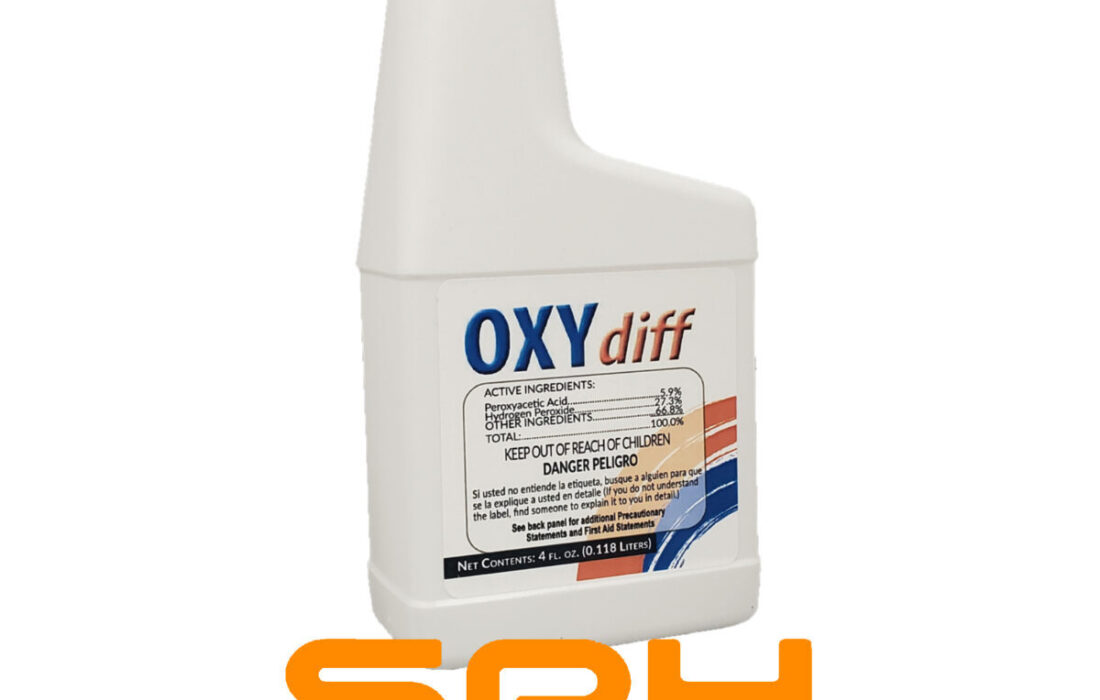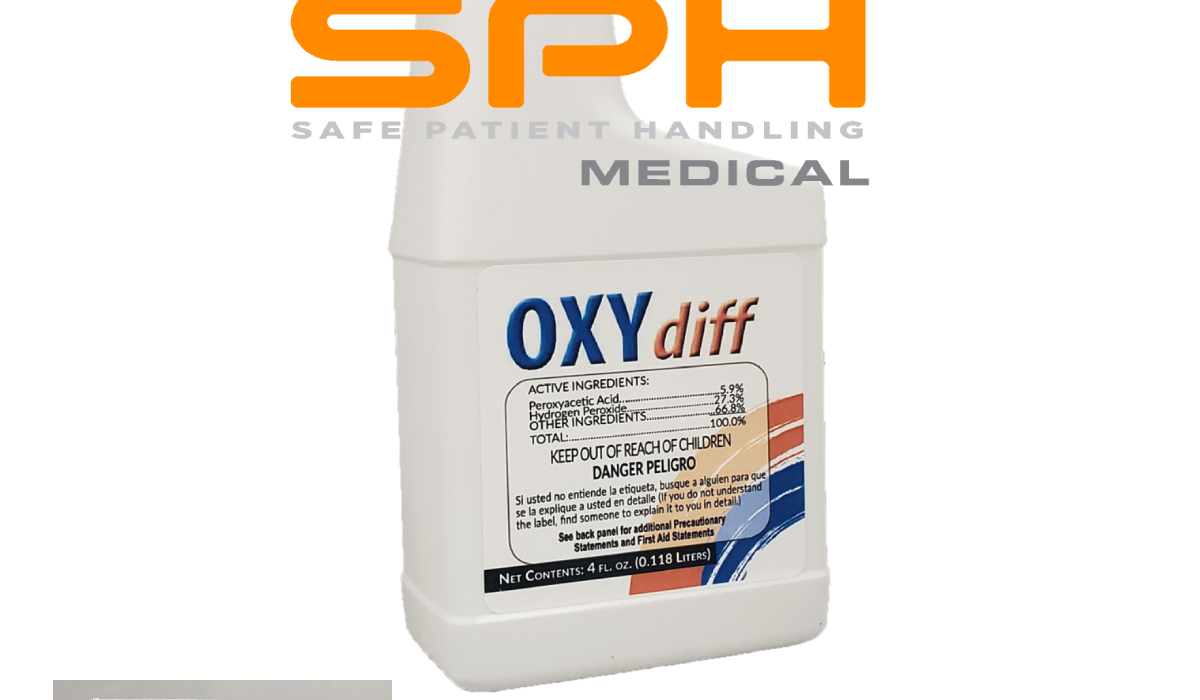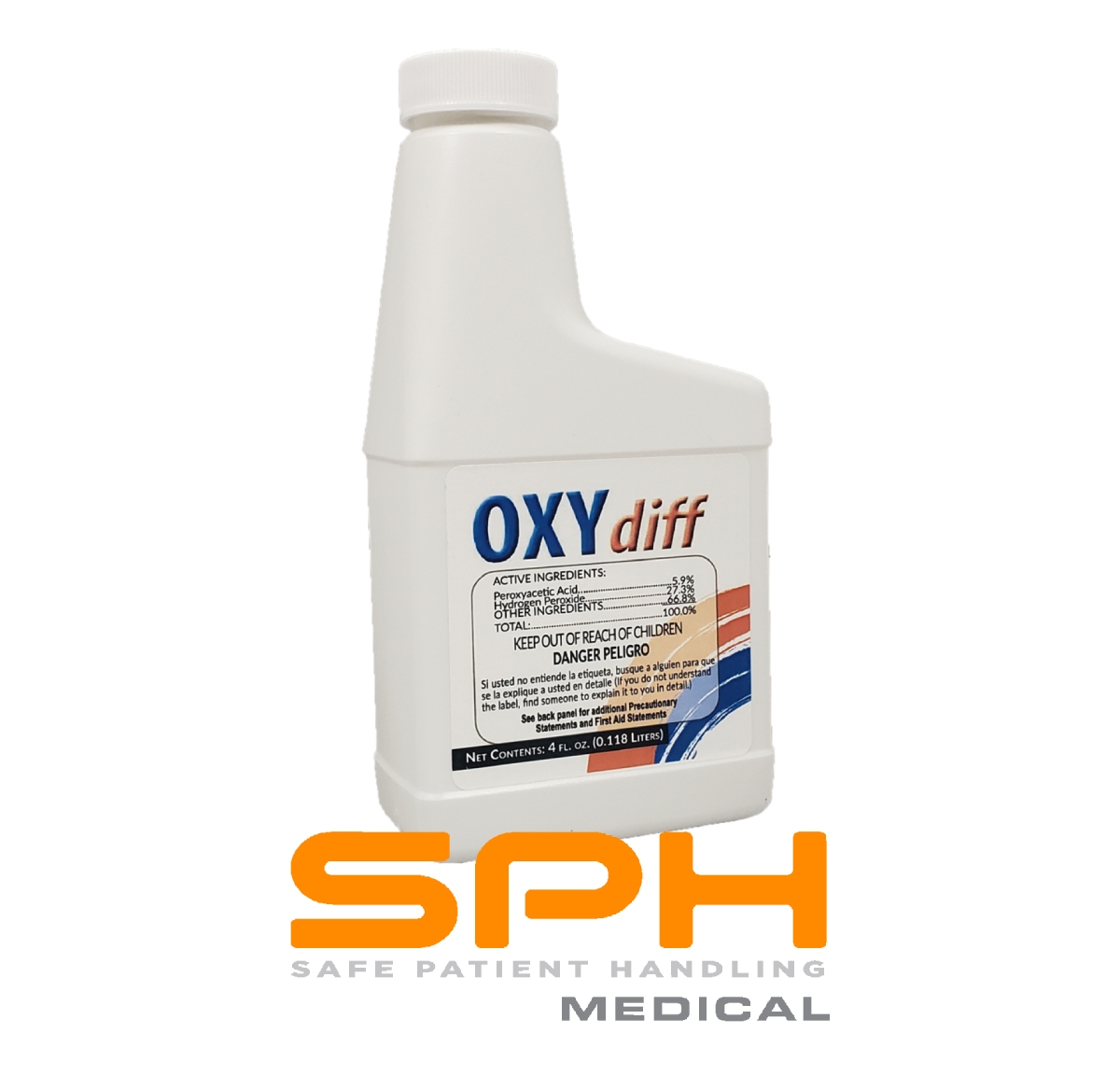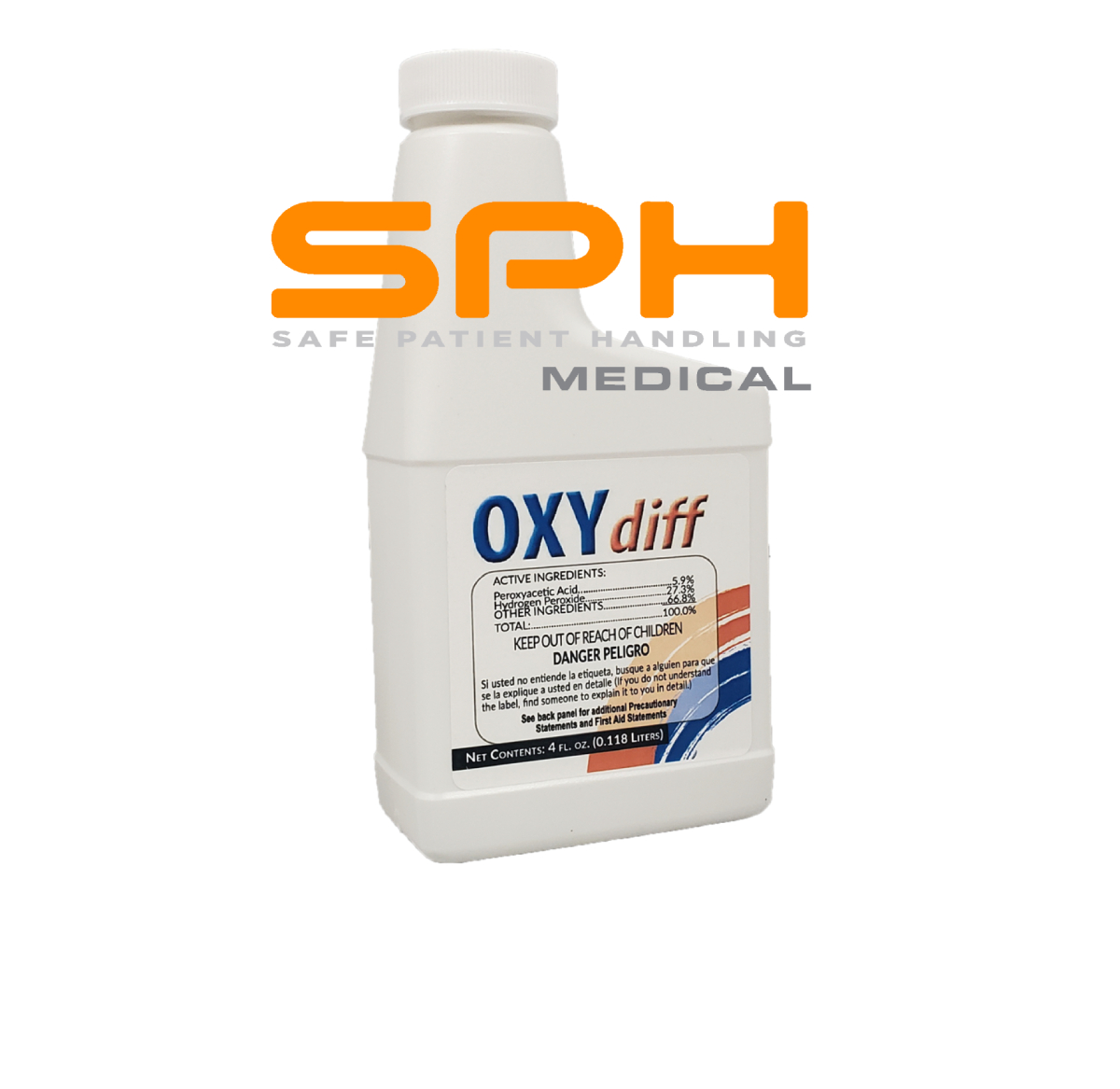Environmental Disinfection to Prevent HAIs
Many people think of using bleach to disinfect the laundry, but bleach can adversely affect health. Bleach is made up of a mixture of sodium hypochlorite and sodium hydroxide. When it contacts proteins like blood, it can release cytotoxic chemicals such as microcystin and chloroform into the air, known to cause significant lung harm. This article will explore reducing the risk of infections as well as methods of environmental disinfection that are more effective in preventing HAIs than bleach.
Oxydiff is a disinfectant solution that effectively kills pathogens on nonporous surfaces, such as countertops, sinks, and other hard surfaces items. It kills various microorganisms, including bacteria, viruses, fungi, and molds. After 2 minutes of contact time, Oxydiff is EPA validated to kill up to 99.999% of all organisms it contacts.
Clostridium deficile is a bacterium that causes hospital illness and is commonly known as C. difficile or C. diff. Although antibiotics are a major cause of C. Diff infections, antibiotic overuse is not the only cause, and it often occurs in patients who were not even taking antibiotics at the time of the infection.
Reducing Risk of Infections Like C. Difficile
The most serious symptom of C. difficile is pseudomembranous colitis (PMC). It occurs when toxins the bacteria produce leach into tissue layers and cause ulcerations2 via an inflammatory response to bacterial proteins. Approximately 60% of patients who have suffered from PMC will eventually die from the infection. C. Diff is no longer a top 10 cause of hospital-acquired infection because newer antibiotics are more effective against it.
C. difficile can be treated with Vancomycin, one of the most potent antibiotics. However, it can take up to 4 days for the full dose to be absorbed into the body, and there are some cases where C. diff levels remain high after treatment.
MRSA is a type of Staphylococcus (staph) bacteria that causes infection in hospital settings, such as operating rooms. It is resistant to most antibiotics and can cause severe skin infections. It can result in pneumonia and blood-borne fungal infections, which can be fatal.
HAIs (Healthcare Associated Infections) are infections that develop while a person is in a healthcare facility. These infections are acquired through close contact with or using items containing bacteria, viruses, or other infectious organisms. These infections may also be acquired from contaminated blood given in transfusions and devices that deliver oxygen or fluids into the bloodstream. Bacteria are the most common HAIs. Most bacteria that cause infections can be killed by certain disinfectants. In particular, chlorine and iodine-based disinfectants effectively kill many types of bacteria. However, persistent bacteria have become resistant to chlorination and iodine-based disinfectants. It has been well documented that healthcare personnel introduces bacteria and other pathogens into the environment through improper hand hygiene and not wearing protective equipment. Some of the most harmful HAIs are Legionella, C difficile, Vancomycin-resistant Enterococci (VRE), MRSA, and Norovirus.
- 1. What is the first step of Environmental Disinfection?Cleaning is the first step! Most of us think that cleaning is the same as disinfection but it is not. Cleaning is the first step because any dirt or debris including biofilm on surfaces needs to be removed before disinfection can occur. The mechanical action of scrubbing and wiping with soap and water or mild detergents can remove and loosen the underlying pathogens
- 2. Current relevant statistics about HAI’sWithin the last decade, HAIs have increased in their reported occurrence and severity, but only in the United States. It is estimated that each year 1.7 million healthcare-associated infections occur in the United States, which result in an additional 100,000 deaths. This accounts for approximately 3% of all deaths nationwide (Centers for Disease Control and Prevention (CDC), 2007). The Joint Commission has reported that as of January 1, 2011, there are now 11 HAI categories (n = 11).
- 3. What are the top pathogens that hospitals are dealing with?The FDA has classified several organisms as “contagious,” Clostridium deficile, VRE, and Norovirus (FDA, 2011). These bacteria can spread by direct and indirect contact with contaminated items and surfaces. Contamination may result from transient person-to-person contact or environmental sources such as environmental surfaces, stethoscopes, blood pressure cuffs, and other patient care equipment. Healthcare workers are most likely to spread this due to poor hand hygiene practices (CDC, 2011)
- 4. What are multi-drug resistant organisms?Multi drug resistant organisms are bacterial that have developed resistance against antibiotics making them very difficult for any of our modern drugs to kill them.
- 5. CDC guidelines for hospital disinfection?The CDC, in conjunction with the Environmental Protection Agency (EPA) and the Food and Drug Administration (FDA), has developed guidelines addressing hospital disinfection. They are known as the Environmental Infection Control and Epidemiology (EIC) guidelines. These guidelines were released in June 2007 but updated in October 2011 (Centers for Disease Control and Prevention, 2007; FDA, 2011). The EIC guidelines instruct healthcare facilities to use an EPA-registered hospital disinfectant or sterilant registered by the FDA.
- 6. OxydiffOxydiff is a hospital disinfectant EPA approved to kill pathogens on surfaces and in the air and help in reducing risk of infections. Oxydiff kills many bacteria, viruses, mold, and spores on surgical scrub brushes, patient rooms, handrails, and medical equipment (EPA, 2011). It is hyrdogen peroxide based disinfectant with paracetic acid that is fully biodegradable. These products have been registered and approved by the EPA for use in healthcare facilities. One of the key benefits of Oxydiff is the flexibility of application. It can be sprayed and wiped, fogged using a fogging system, can be applied as a spray to surfaces or as a wipe solution for a combination of surfaces.
Environmental disinfection is critical to the success of HAI prevention. Multi-drug resistant organisms are becoming more prevalent due to the growing number of antibiotic-resistant bacteria. The CDC has recommended that healthcare facilities “consider the use of an Environmental Control Unit (ECU) to disinfect air and surfaces to prevent HAI” (Centers for Disease Control and Prevention, 2007).




